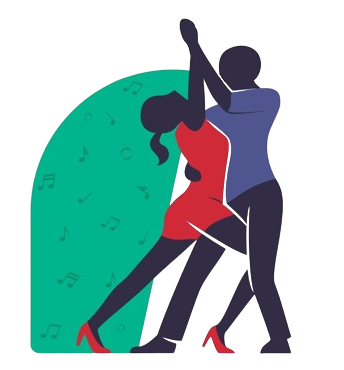Dancing as a Way to Express Oneself
Within the field of human expression, dancing serves as a profound and visceral language that goes beyond spoken words. Dancing has been used to express the depths of human emotion in a variety of contexts, from happy celebrations to moving stories. It explores the depths of the emotional spectrum as a mode of self-expression, giving people a special and potent way to express their deepest emotions.
1. The Body as a Canvas:
Dance allows individuals to use their bodies as canvases for emotional expression. Every movement, every gesture, becomes a brushstroke conveying a myriad of emotions. Whether it’s the fluid grace of a contemporary dancer or the rhythmic footwork of a tap dancer, the body becomes a medium through which emotions are articulated, shaping a narrative without the need for words.
2. Liberation through Movement:
Dance serves as a liberating force, enabling individuals to break free from the constraints of societal norms and expectations. In the act of dancing, people can shed inhibitions, embrace vulnerability, and express emotions that may be challenging to articulate verbally. The freedom of movement becomes a form of personal liberation, offering a cathartic release for pent-up feelings.
3. Cultural Narratives and Traditions:
Cultures around the world have embedded emotions within the fabric of dance. Traditional dances often tell stories of love, loss, triumph, and struggle. From the passionate flamenco of Spain to the expressive Hula of Hawaii, cultural dances serve as repositories of emotions, passing down narratives through generations and preserving the emotional essence of a community.
4. Healing and Therapeutic Benefits:
Dance has been recognized for its therapeutic benefits, offering a holistic approach to emotional well-being. Movement therapy, or dance/movement therapy (DMT), is used to help individuals cope with trauma, reduce stress, and improve overall mental health. Through dance, individuals can explore and process their emotions, promoting self-awareness and resilience.
5. Personal Empowerment:
Engaging in dance empowers individuals by allowing them to reclaim control over their bodies and emotions. Whether it’s a solo performance or a group choreography, the act of dancing instills a sense of agency and self-determination. It becomes a tool for self-discovery and empowerment, fostering a deeper connection to one’s own emotional landscape.
6. Non-Verbal Communication:
Not all emotions can be easily expressed in words, and dance provides an alternative form of non-verbal communication. Movements, facial expressions, and body language convey nuances that language may struggle to capture. In this way, dance becomes a universal language, understood across cultural and linguistic divides.
7. Dance Across Genres and Styles:
From classical ballet to contemporary hip-hop, each dance genre offers a unique canvas for emotional expression. The intense emotions conveyed through the precise movements of a ballet dancer may differ from the raw, unbridled expression found in street dance. The diversity of dance styles allows individuals to choose the vocabulary that resonates most authentically with their emotional experiences.
8. Community and Connection:
Dance also fosters a sense of community and connection. Whether in a dance class, a social dance setting, or a performance group, the shared experience of movement creates bonds among individuals. The collective expression of emotions through dance builds a sense of unity and understanding, reinforcing the idea that emotions are universal and can be shared and appreciated by others.
In conclusion, dance serves as a rich and multifaceted form of self-expression, providing individuals with a medium to articulate and explore their emotions. Beyond its aesthetic beauty, dance embodies the emotional language of the human experience, offering a profound means of communication that resonates on a deeply personal and universal level. As individuals step onto the dance floor, they embark on a journey of self-discovery, self-empowerment, and connection to the emotional essence of what it means to be human.



